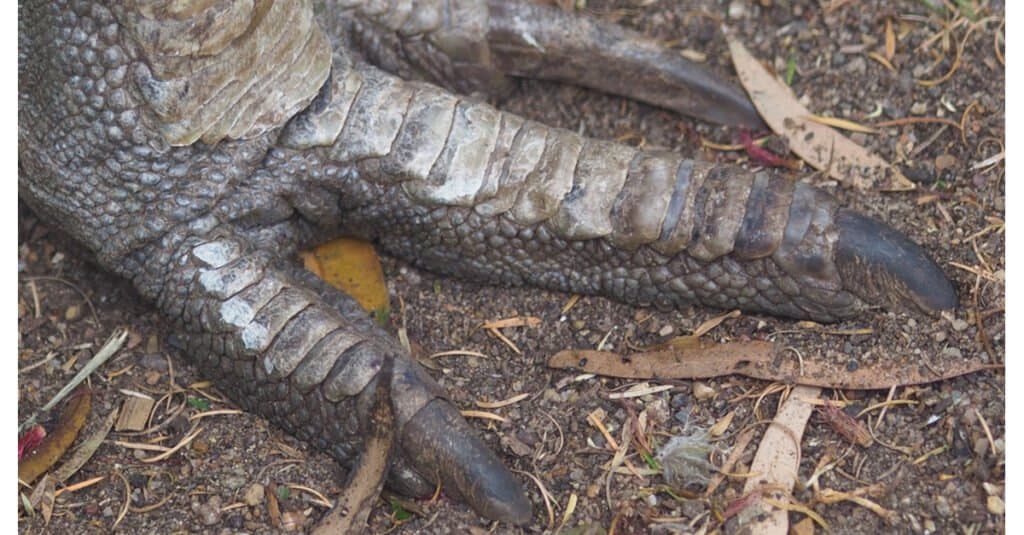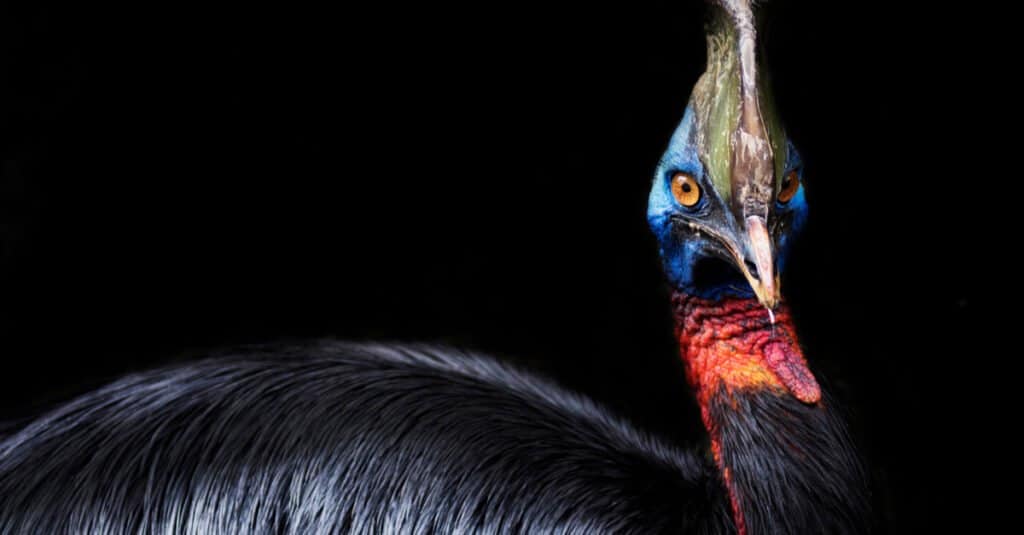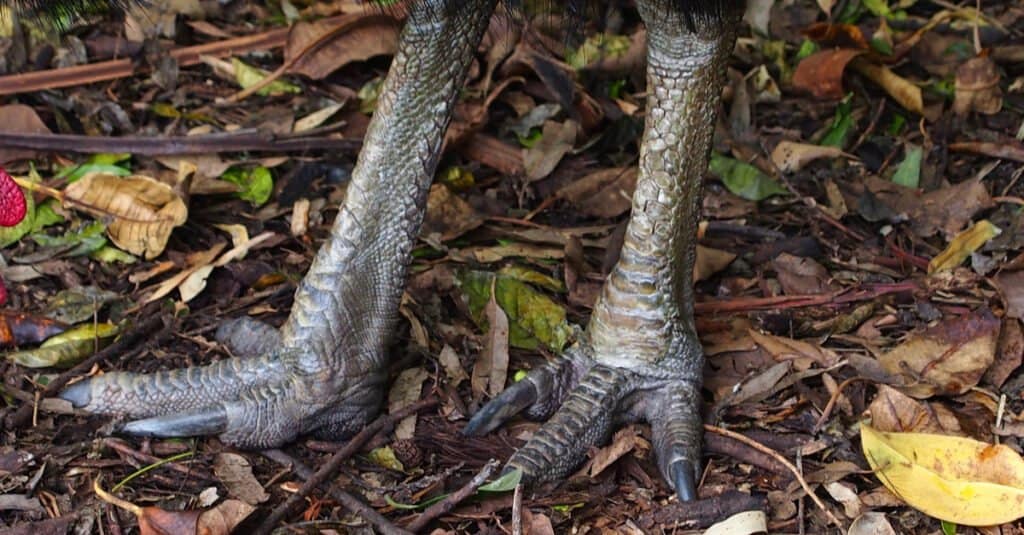It’s not every day you can say an animal’s foot became the talk of the Internet. But that’s exactly what happened in January 2019. A tweet (embedded below) from a Ph D student showed a striking picture of a cassowary foot.
Just how big is this foot and how deadly is it? Let’s dive into the full details below!
The Cassowary Foot: Built for Defense

A close up of a cassowary foot
©Andreas Ruhz/Shutterstock.com
Cassowary feet have three toes each with claws on the end (more on those in a moment). The feet are at the bottom of long legs that bring some cassowary species to a height of nearly six feet tall.
It’s important to note that cassowaries are not predators. Rather they eat a diet that’s heavy in fruit and only occasionally will eat insects, snails, and small mammals. So when you see the claws of a cassowary, they’re adapted for defense.
Cassowaries can run up to 31 miles per hour (50 km) and jump seven feet in the air from a standstill, which should give you a picture of how powerful their legs are!
Powerful legs helpful the cassowary run that fast through a dense forest. A cassowary can also jump close to seven feet in the air and swim very well. The bird is good at fending off threats and escaping danger by outrunning them. These birds are also known to be slightly aggressive and dangerous to humans.
These giant birds are not afraid to use their claws either and are described as “unpredictable.” When facing trouble a cassowary will claw and kick at potential threats, which has led to multiple human casualties.
The Cassowary Claw: Long and Dagger-Like

A look at the distinct appearance of a cassowary
©Sardo Michael/Shutterstock.com
As noted above, cassowary feet have three toes that each have a claw on the end. Two of the toes have relatively short claws, measuring around an inch. A third claw on the inside of the foot is what really draws attention as it reaches up to five inches in length.
If the claw of the cassowary vaguely reminds you of something out of Jurassic Park, there’s good reason for that! The relatives of cassowaries evolved shortly after the extinct of the dinosaurs and the birds remain one of the closest living relatives to dinosaurs alive today.
Just How Dangerous is a Cassowary Claw?
Across the past 100 years, there have been two cassowary incidents that turned fatal to humans. The first occurred in Australia back in 1926. Two teenagers attacked a cassowary leading to one being struck in the neck with the cassowaries claw. The second — more recent incident — occurred in Florida in 2019. A man who kept a cassowary on his farm fell to the ground and the cassowary clawed him to death.
Given these fatalities, are cassowaries really “the most dangerous bird in the world” as Guinness World Records has called them? The truth is that cassowaries lives in remote areas where they rarely encounter humans. Further, a 2006 study found that 75% of cassowary attacks occurred because the animals were being fed by humans.
Cassowaries prefer to charge first, and any vision of giant birds leading with claws five feet in the air is pure fiction. 71% of incidents with cassowaries saw them charging or pushing.
So while a cassowary claw my look imposing, the animal still prefers to charge first, and kick second.

One last look at the prehistoric feet of a cassowary!
©Andreas Ruhz/Shutterstock.com
Next Up…
- Cassowary Attack: Are Cassowaries Dangerous to Humans? – Click to find out if you need to watch out for these massive birds!
- 10 Incredible Cassowary Facts – Keep reading to learn these amazing facts about cassowaries, you may be surprised!
- Cassowary Location Guide: Where Do Cassowaries Live? – Where can you find cassowaries in the wild? Keep reading to learn more!
The photo featured at the top of this post is © Andreas Ruhz/Shutterstock.com
Thank you for reading! Have some feedback for us? Contact the AZ Animals editorial team.






